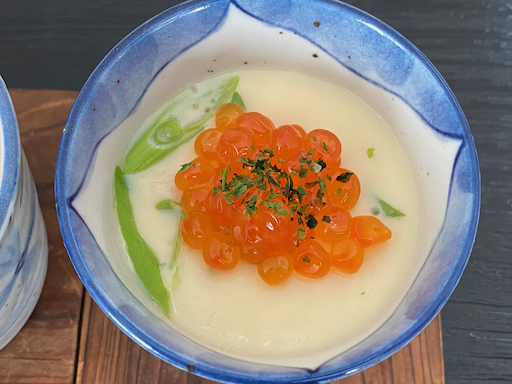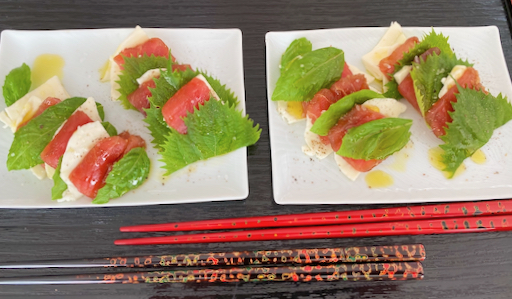Come to think of it, I never cooked mackerel this basic way. When I got two whole Spanish mackerels from HMart via Instacart, there was too much to make it all into the miso-simmered dish 鯖の味噌煮 I usually make. So, I took two filets I prepared from the smaller of the two fish and made this salted and grilled mackerel. I filleted the fish and removed the small pin bones. Then I cut one filet into two and salted both sides. I let it stand for 10 minutes and blotted the surfaces using a paper towel. I made shallow cuts on the skin and re-salted it. Since I do not have a Japanese style fish grill and I did not want to cook fish in the toaster oven, I sautéed the fillets in a frying pan with a small amount of olive oil.
This is a basic simple way of cooking mackerel but it was good. On the side, I added sliced mini-cucumber (salted and moisture squeezed out) dressed in sushi vinegar. Since we had just harvested and pickled myoga, I added it too. This could have gone very well with rice. We had it as a drinking snack with cold sake.
















